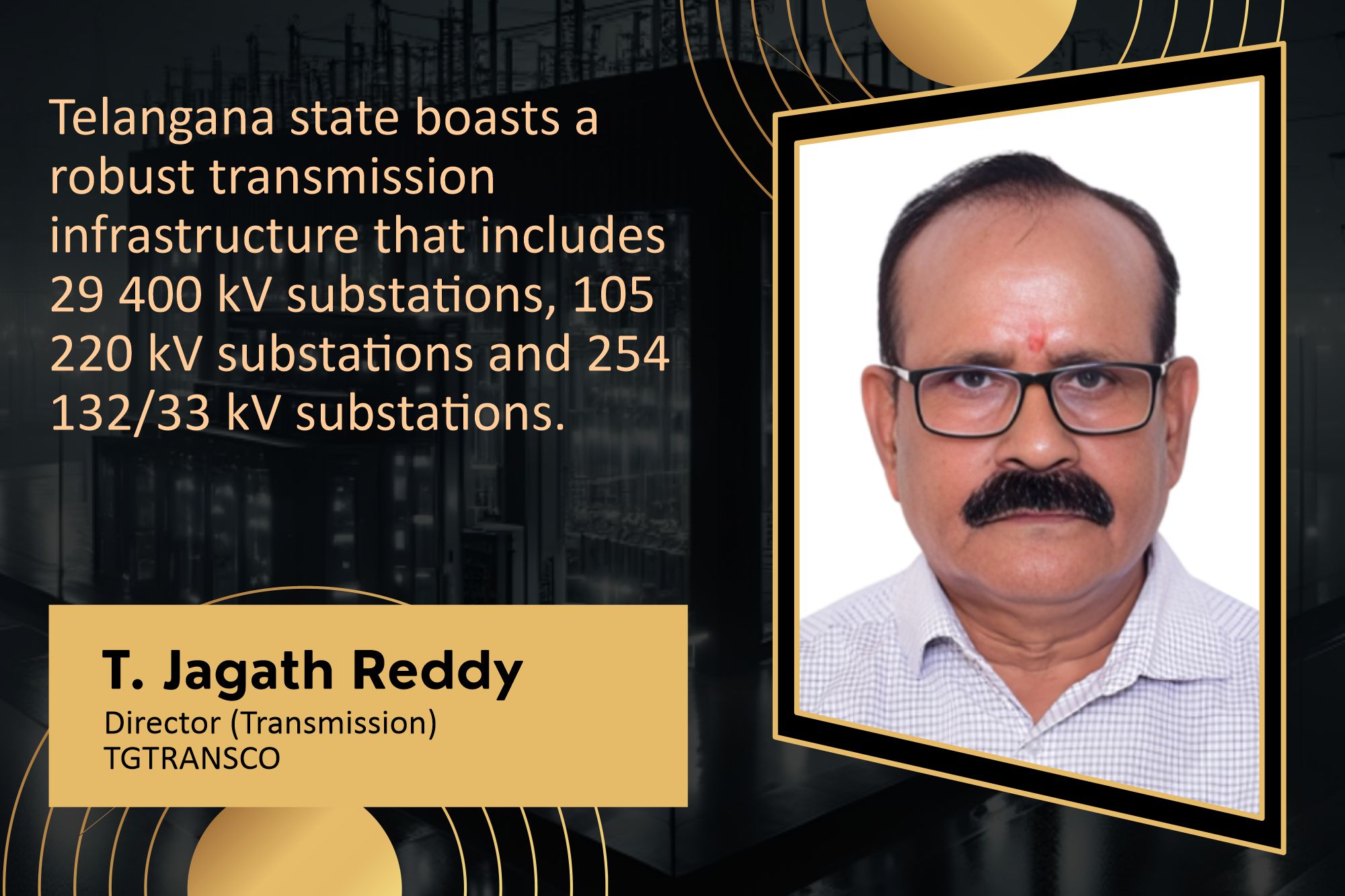TGTRANSCO is setting the benchmark in transmission advancements for other utilities
By EPR Magazine Editorial May 6, 2025 11:09 am IST
By EPR Magazine Editorial May 6, 2025 11:09 am IST

Over the last eleven years, Telangana has witnessed a phenomenal transformation in its power transmission infrastructure, making it one of India’s most reliable and efficient networks. From a modest beginning, the state has built over 5,000 circuit kilometres of transmission lines and dramatically expanded its substation network. The total contracted generation capacity in the state now stands at approximately 20,520 MW. Telangana boasts a robust transmission infrastructure that includes 29 substations of 400 kV, 105 substations of 220 kV, and 254 substations of 132/33 kV, creating a comprehensive grid that ensures connectivity across urban and rural areas.
A notable highlight is the expansion of 400 kV transmission lines, which increased from just 600 km to over 7,070 km, enabling the state to meet peak power demands efficiently—recently reaching a record 17,162 MW. Advanced technologies like gas-insulated substations (GIS) have been widely adopted. The state has established around 15 GIS substations, including a four-level voltage GIS substation in Hyderabad that integrates 400 kV, 220 kV, 132 kV, and 33 kV levels within a compact 5-acre plot in the city’s heart. For the past eight years, this strategic investment has ensured an uninterrupted 24-hour power supply to all consumers, including over 30 lakh agricultural customers.
Regarding renewable energy integration, Telangana has successfully connected around 6,000 MW of solar power to the grid without additional transmission infrastructure, as these are largely load-side connections. An additional 2,469 MW of solar capacity is under construction. The state has formed a triple-layered transmission ring around Hyderabad, ensuring reliable power evacuation from generation sources to end users. These include an innermost 400 kV ring within the city, a mid-level ring connecting surrounding substations and an outer ring about 100 km from Hyderabad that connects interstate networks and major generation facilities. Telangana is also home to advanced substations, such as the underground 400 kV GIS substation, which was built 100 meters below ground.
Telangana has kept its network availability at an impressive 99.98 per cent over the last seven years, while transmission losses have been significantly reduced from 4.3 per cent at the time of state formation to just 2.16 per cent recently. This reduction has been achieved by strategic planning and efficient implementation of technologies like High-Temperature Low Sag (HTLS) conductors. In Hyderabad alone, HTLS retrofitting three transmission lines saved the state over ₹1,100 crore compared to installing new underground cable systems. Approximately 20 such lines have been upgraded, with another 30 lines planned for conversion over the next five years.
Innovative space-saving solutions have also been deployed, such as using monopole towers for 400 kV double circuit lines in core urban areas, GIS substations where land is limited, and bus model systems to enhance substation capacity without new land acquisition. The transmission network is entirely geo-mapped, with every tower and substation integrated into a geographic information system, enabling precise planning and asset management. Outdoor GIS substations, like the one at Manikonda, have also been introduced with two 80 MVA transformers supplying 33 kV feeders.The state is also leading in digitisation and automation, with many substations now operating remotely. One example includes 132 kV substations being monitored from centralised 220 kV stations, reducing manpower while increasing efficiency. The future roadmap includes the addition of 12 new 400 kV substations, 25 substations at 220 kV and 47 at 132 kV, alongside widespread transformer capacity enhancements based on projected load growth.
To strengthen human resource capabilities, a comprehensive handbook containing over 1,400 frequently asked questions is being compiled and distributed. It will become a widely respected reference in the electrical utility sector. Recognised for its achievements, the state’s transmission sector has won several national awards and is now considered a benchmark for others.
We use cookies to personalize your experience. By continuing to visit this website you agree to our Terms & Conditions, Privacy Policy and Cookie Policy.